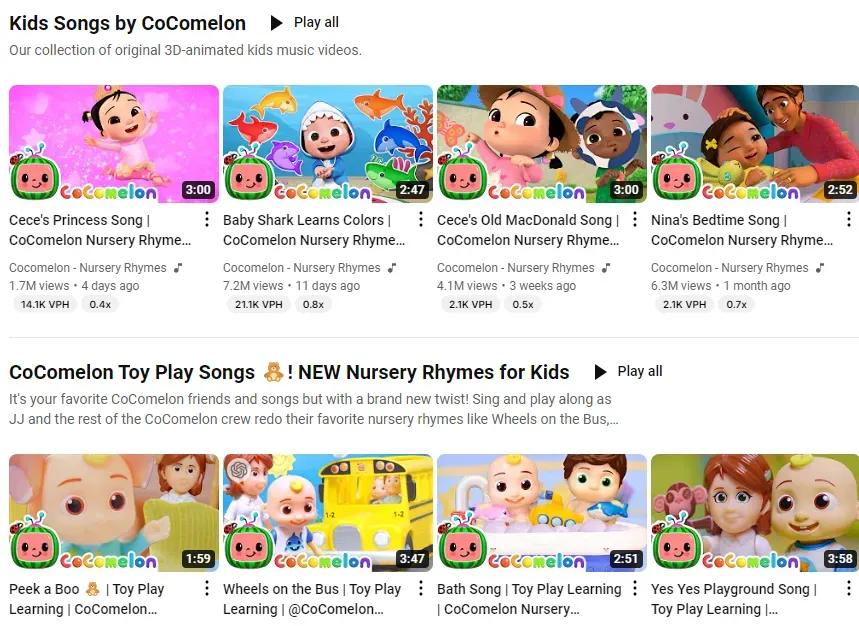Crafting Content for Kids on YouTube: Key Considerations for Success
Creating content for children on YouTube is a unique and rewarding endeavor, but it comes with its own set of challenges and responsibilities.


Key Takeaways
- Understanding child-friendly guidelines and audience preferences is required when creating content for kids on YouTube.
- Integrating educational and entertaining elements in a manner that is safe and age-appropriate is essential.
- Staying updated with YouTube’s changing policies regarding children’s content is important for compliance and success.
Creating content for children on YouTube is a unique and rewarding endeavor, but it comes with its own set of challenges and responsibilities. YouTube has strict guidelines for children’s content, especially after the Children’s Online Privacy Protection Act (COPPA) compliance measures were enforced.
Here’s what creators need to understand when making kid-friendly content on YouTube:
Understanding YouTube’s Policies for Kids’ Content
YouTube has dedicated policies for content intended for children, primarily focusing on ensuring safety and privacy. Content must be appropriate for children and should not collect personal information from viewers under 13.
For instance, creators must refrain from incorporating data-driven advertisements in videos directed at children, following COPPA compliance. Non-compliance can lead to penalties, so creators must remain informed of any updates to YouTube’s policies regarding kid-focused channels.
Balancing Education and Entertainment
Content designed for children should ideally strike a balance between educational value and entertainment. Successful educational channels such as Blippi skillfully blend learning with fun, covering subjects like colors, numbers, and shapes in an engaging manner for young viewers.
Merging entertainment with valuable learning helps to maintain children’s attention while offering parents peace of mind knowing their kids are engaging with meaningful content.
Age-appropriate and Safe Content
Ensuring that the content is age-appropriate and safe for children is paramount. This involves refraining from using explicit language, violence, or content that could be unsettling or confusing for young viewers.
A channel focusing on storytelling for kids should choose stories suitable for their age group and avoid themes that are too complex or mature. This also applies to visual elements; colors, characters, and settings must be designed to comfort and captivate the target age group.
Interactive and Engaging Format
Children are more likely to engage with content that is visually engaging and interactive. Using bright colors, animations, and interactive elements like songs and dances can keep young viewers interested and entertained.
For example, Cocomelon – Nursery Rhymes uses colorful animations and catchy songs to educate kids about daily activities and experiences. Incorporating call-and-response actions or teaching kids simple tasks, like singing along or counting, can enhance their learning experience while making the content fun.
Consistency and Regularity
Consistency in delivering content helps build a loyal young audience. Following a regular posting schedule and maintaining a consistent theme or set of characters across videos can help establish familiarity and trust with young viewers. Children thrive on repetition, so maintaining a steady rhythm in content uploads creates anticipation and ensures kids return for more.
Parental Involvement and Feedback
Promoting parental involvement and feedback can provide valuable insights into what works and what doesn’t in children’s content. Producing content that also appeals to parents or caregivers ensures they feel comfortable with their children watching your videos.
Parents often look for content that is not only safe for their kids but also enjoyable enough for co-viewing. Including educational resources for parents or offering downloadable activities can foster further engagement.
Adhering to Advertising Guidelines
Creators should be aware of the advertising guidelines for children’s content. This includes avoiding the promotion of products or services directly to young viewers, which can be seen as exploitative.
Ads within children’s content must align with YouTube’s regulations, especially regarding in-video sponsorships or product placements that target younger audiences. Being transparent and mindful of ad placements ensures compliance and builds trust with both children and parents.
Monetization Challenges and Alternatives
Due to targeted ad restrictions, CPM (cost per thousand views) for kids' content is generally low, often below $0.10. While monetizing children’s channels can be difficult through traditional ad revenue, there are alternative strategies for revenue generation.
For example, kids’ channels can explore book sales, offer educational services to kindergartens, or create personal or character branding opportunities. By diversifying income streams, creators can overcome the challenges of lower CPM while still thriving on YouTube.
Conclusion
Creating content for kids on YouTube involves delicately balancing fun, learning, and safety. Content creators can successfully navigate the world of children’s content on the platform by understanding and following YouTube’s guidelines, focusing on creating age-appropriate and engaging content, and staying updated with policy changes.
Embracing a child-centric, educational, and entertaining approach while maintaining compliance will help creators build a strong, loyal audience in the kids’ content niche.
Additionally, watch this video for insights on growing a children's YouTube channel: How to Grow a YouTube Channel for Kids.
For more strategies on family-friendly content creation, check out our guide on Kids and Family Content: Strategies for Success in Family-Friendly YouTube Niches and Edu-tainment: Merging Education and Entertainment for YouTube Success.
Also, don't forget to check out Vimerse. Vimerse is a video editing agency for content creators and marketing agencies. We offer fast video editing at a price you'll love. We edit videos for YouTubers & Tiktokers with 10M+ subscribers. Get the best video editing services and grow your channel.


